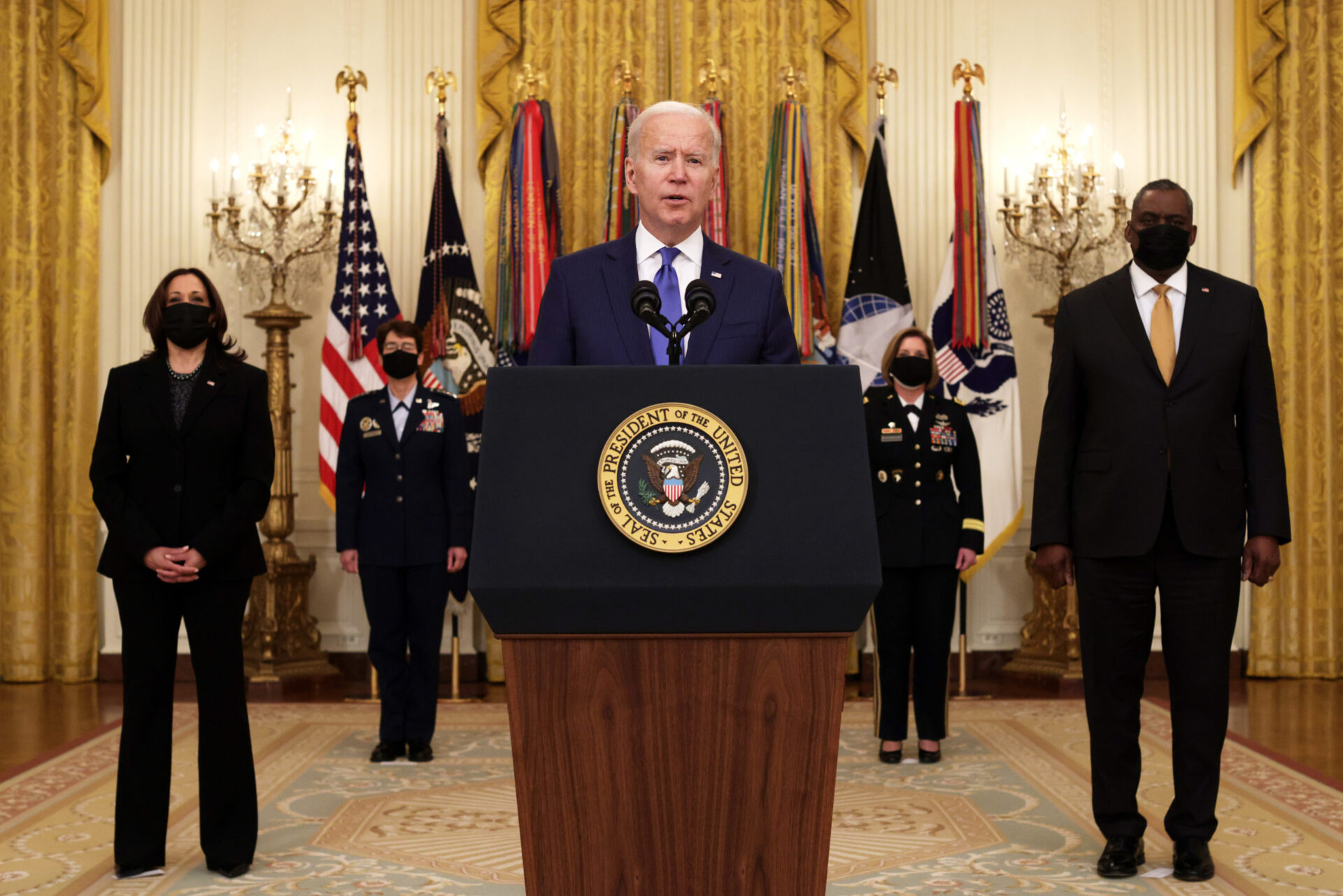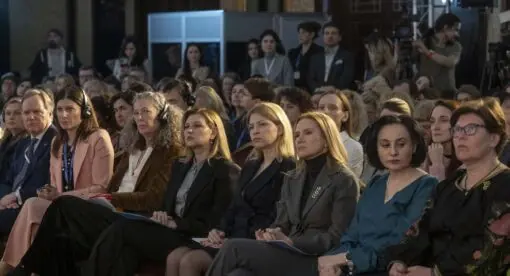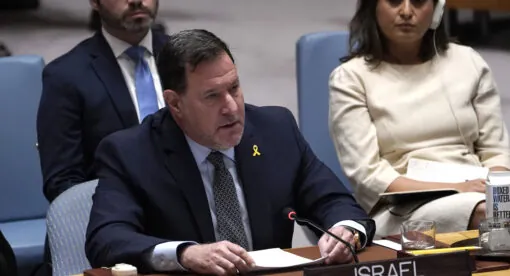Before it can take the lead in fighting gender-based violence worldwide, the United States needs to address practices that are part of that violence, such as child marriage, within its own borders.
Child marriage is a global problem that not only harms the children involved but also impedes U.S. foreign policy objectives and international development. These types of marriages violate children’s human rights around the world, bear a large economic cost, and induce multi-generational poverty as children are forced into adulthood instead of finishing school, finding work, and contributing meaningfully to the economy and society as a whole.
American conceptions of child marriage betray a belief in American exceptionalism – what happens in other countries does not happen here, or so the thinking goes. And yet, before 2018, child marriage was legal in some form or another in every state in the U.S. This is a result of having no federal law mandating a minimum age of marriage – instead, the decision is left to the states, where legislatures have retained legal loopholes (such as parental consent or court approval for underage marriage) and state lawmakers have voted down bills to raise the minimum age of marriage.
An understanding of how child marriage is connected to GDP rates, development, and worrisome demographic trends around the world is required to give U.S. policymakers the necessary context and urgency to establish and enact child marriage laws that protect American children. President Joe Biden has stated that he wants to bring respected U.S. leadership back to the forefront of global affairs and lead other countries in the fight to end gender-based violence.
Child marriage is one of the many forms of this violence, but the fact that it legally takes place in the U.S. is an obstacle to the Biden administration’s ambition of putting human rights at the center of U.S. policy. The Biden administration must acknowledge the harmful effects of child marriage, not only on its victims but also on global economies, U.S. foreign policy goals, and global demographics. The U.S. cannot in good faith work to end gender-based violence and child marriage in other countries without first addressing these issues at home, where they have managed to persist since the founding of the country.

Biden’s Foreign Policy Pivot
The president gave a speech in February at the State Department outlining his foreign and domestic policy objectives for the next four years. He spoke of repairing America’s alliances and engaging with the world once again, of employing diplomacy rooted in universal human rights, and of protecting the rights of children in the U.S. and across the globe.
This is a pivot from the previous four years, where the U.S. record on human rights, particularly women’s rights, seriously regressed. Biden has promised to involve the U.S. more positively in the international community and wants Washington to lead the global effort to end gender-based violence. He is working to keep this promise through the creation of the White House Gender Policy Council, the mission of which is to uplift the rights of girls and women in the U.S. and around the world. He has already rescinded the Mexico City Policy (aka the Global Gag Rule), which restores much-needed funding to U.N. agencies and nongovernmental organizations working to prevent gender-based violence globally, and has promised to pursue ratification of the U.N. Convention on the Elimination of all Forms of Discrimination Against Women (CEDAW).

Biden has made enacting the 2019 Violence Against Women Act reauthorization a top priority in his first 100 days. Though the current version was updated to include a definition of forced marriage, it still does not include measures to deter forced child marriages despite the fact that nearly a quarter of a million children were married in the U.S. between 2000 and 2010.
In her confirmation hearing, U.S. Ambassador to the United Nations Linda Thomas-Greenfield made a case for reestablishing U.S. leadership in global affairs with a platform rooted in “respect for universal human rights and the promotion of peace and security.” If the Biden administration aims to repair foreign relations and establish the U.S. as a champion of human rights, it must confront the disconnect between its efforts to fight gender-based violence globally versus domestically.
Understanding Child Marriage as a Global Problem
Child marriage is a human rights violation and a form of gender-based violence. It disrupts normal growth patterns by moving a child directly into adulthood before she or he is ready. Each day, tens of thousands of girls around the world are married before they are physically or emotionally ready to become wives and mothers. Child brides have a greater risk of experiencing intimate partner violence, living in poverty, having poor health outcomes, having more children and having children at earlier ages, and dropping out of school than their peers who marry at a later age. Child marriage disempowers girls and young women and deprives them of many fundamental human rights, including rights to education, basic health, and to live free from exploitation and violence. Child marriage not only affects young brides and grooms, but also impacts their children, families, and communities as they are restricted in their ability to achieve their full personal, economic, and social potential.


Beyond the obvious human costs of child marriage, these types of unions cost money and result in an intergenerational transmission of poverty and lost earnings as children are forced to marry instead of furthering their education, gaining employment, and participating meaningfully in the market and in society. A study published in the Berkeley Economic Review found that child marriage costs economies at least 1.7% of their GDP and increases total fertility of women by 17%, which hurts developing countries struggling with high population growth. Ending child marriage could also reduce a country’s dependence on overseas development assistance and generate billions of dollars in annual benefits.
The leading cause of death of girls ages 15 to 19 is complications from pregnancy and childbirth. Girls under the age of 15 are five times more likely to die due to such complications. However, if girls were not forcibly married and were allowed to continue their education, the world would reap the benefits – trillions of dollars in benefits, to be exact. According to the World Bank, if every girl in the world stayed in school for 12 years of quality education, lifetime earnings for women could then grow by $15 trillion to $30 trillion. In places where child marriage is pervasive, a shift in mindset from seeing girls as a financial burden to seeing girls as potentially growing up to be wage earners would be beneficial not only to victims but also to their communities and their countries at large.
Among other geopolitical consequences, child brides have a reduced ability to obtain economic resources and less bargaining power in the household. Studies show that intimate partner violence – which is more likely to happen to child brides than to their peers who marry later – can be a predictor for violent civil unrest and international conflict. In her 2012 book “Sex and World Peace,” Dr. Valerie M. Hudson and her colleagues found a “statistically significant relationship between the physical security of women and the overall peacefulness of states.” Child marriage, and gender-based violence as a whole, is intimately connected to greater, systemic societal issues.
The coronavirus pandemic has facilitated the largest surge in global child marriage rates in the past 25 years, according to a study by Save the Children. The organization estimated that nearly half a million more girls were at risk of child marriage in 2020 and a further 1 million are expected to become pregnant due to the pandemic. The report found that between 2020 and 2030, 13 million more children could be married than previously predicted, which will lead to an increase in maternal mortality, adolescent pregnancies, population growth, and psychological harm to child victims.
It is clear that child marriage impedes progress and development in countries around the world. In Afghanistan, for example, more than one-third of children are married before their 18th birthday, the majority of whom are girls. Extreme poverty, poor access to education, and strong patriarchal values lead families, particularly in more rural areas, to give their children away in marriage, often in exchange for money or goods. Newly appointed National Security Advisor Jake Sullivan spoke with his Afghan counterpart, Hamdullah Mohib, in January and highlighted U.S. support for protecting the significant advances made by Afghan women and girls as a part of the peace process. The U.S. is currently in a position to put pressure on the Taliban to address the issue of child marriage within the context of women’s rights during these peace talks.

But before attempting to pressure other countries to end child marriage, the U.S. must first rectify the situation of child marriage at home.
Understanding Child Marriage as an American Problem
Despite the high rate of child marriages in Afghanistan, the Afghans actually have tougher laws against child marriage than some U.S. states. In Afghanistan, a girl can marry at 16, or at 15 with permission from her father or a judge. In Alaska, a child can marry at 14 with parental consent and court approval. In California, a child of any age can marry with parental consent and court approval.
The U.S. also has archaic and problematic statutory rape exceptions. As U.S. law currently stands, marriage laws include institutionalized child abuse and organized rape. 18 U.S.C. Section 2243(c)(2) allows statutory rape if “the persons engaging in the sexual act were at that time married to each other.” This law allows for an adult to engage in sexual activity with a child as young as 12 years old and gives them incentive to force their victims into marriage.
The issue of child marriage is also an obstacle to Biden’s key development outcomes and the United States’ international obligations. Under the U.N. Sustainable Development Goal, the U.S., along with countries around the world, agreed to end all child marriage by 2030. Many countries, including Germany, Malawi, Spain, and Nepal, amended their laws in order to reduce instances of child and early marriage in their countries. It is expected that Thomas-Greenfield will work with other nations to realize these goals and advance human rights, given that she said she plans to examine ways in which the U.S. can press the U.N. to be “more effective in how they address the goals” and ensure they are actually achieved by 2030. The U.S. also has an obligation under the Beijing Declaration and Platform for Action to eliminate all forms of discrimination against girls and promote and protect their rights – this includes protecting them from child marriage. If child marriage is not addressed in the U.S., Biden will have failed in his promise to protect and uplift the rights of young Americans and the White House will have a tough time convincing the world to combat gender-based violence in their own countries.
A first step would be to ratify CEDAW and the U.N. Convention on the Rights of the Child (UNCRC). The U.S. is the only U.N. member state that is not party to UNCRC, which is baffling since both the Reagan and George H.W. Bush administrations participated in treaty negotiations and contributed heavily to the drafting of the document. Beyond international treaties, the Biden administration must establish new laws protecting children in the U.S. from forced marriage, strengthen existing laws, and raise awareness of the issue among the American public.
Recommendations
- President Biden should call for Congress to amend the Violence Against Women Act to include measures on child marriage and introduce a bill to end child marriage in the U.S.
- Lawmakers must immediately repeal law 18 U.S.C. Section 2243(c)(2), which defends statutory rape.
- The U.S. should ratify CEDAW and UNCRC.
- In addition to passing and strengthening laws, the U.S. needs national awareness campaigns, widespread education, community action plans, and multisectoral partnerships. Children and victims of child marriage are the experts on their own experiences and have a right to participate in the decisions that affect them.
- The U.S. should fill the data gap by supporting more research, data collection, and sharing of information about child marriage. It is critical to be able to measure progress toward achieving the U.N. Sustainable Development Goals and the Beijing Platform for Action, so every child must be counted with improved data collection (with particular attention on humanitarian contexts). This entails disaggregating data by sex, age, disability, and other descriptors.
- Once the U.S. has outlawed child marriage, it should establish international minimum criteria for foreign assistance through U.N. channels.
Emily Prey is a Senior Analyst for Special Initiatives at the Newlines Institute. A child protection and gender specialist with several years of experience working in international development settings, Prey served as Project Manager of the Financial Integration in Displacement Initiative of the International Rescue Committee at Tufts University. She has also worked with the United Nations International Children’s Emergency Fund (UNICEF) and several global NGOs. Follow her on Twitter at @eepreylove.






